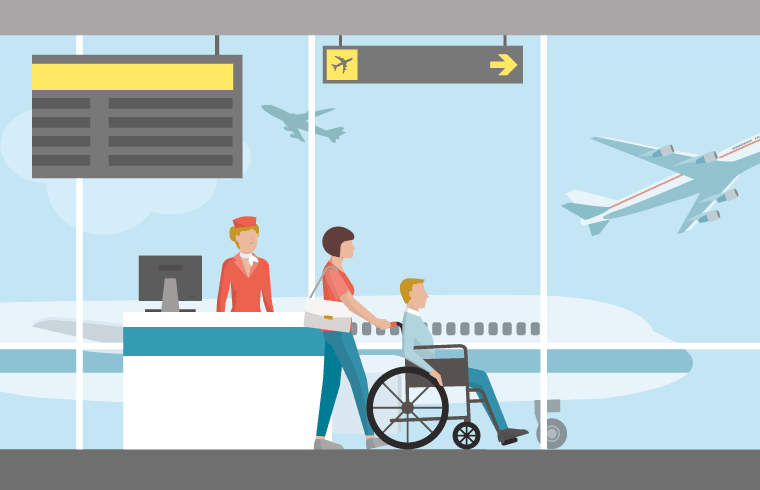A cruise can be a rewarding and enjoyable vacation for travelers with disabilities, but it’s imperative to do your research and planning before setting sail. Here are our tips to make the most of your vacation at sea.
Before you travel check out the Government of Canada website with information on accessible travel and transportation in Canada. This page also has a great link to help you find information on the Canadian embassies at your destination, or their consulate in Canada.
Cruise ships, even vessels sailing under foreign flags, that dock in U.S. ports are required to abide by the Americans with Disabilities Act. On these ships you will find wheelchair-accessible cabins, public bathrooms, theaters and restaurants. The newest ships go even further to make more amenities available to passengers with limited mobility and other disabilities. This law doesn’t apply to international ports however so it is beneficial to sail onboard an American line.
One of the most critical aspects of ADA compliance for cruise ships is the accessibility of their cabins, or staterooms. Each ship should have at least a few fully accessible staterooms that stay reserved for guests with disabilities to book. All of the cruise lines have accessible public areas, with large corridors, automatic doors, and special seating. They also offer accessible staterooms with wide doorways, ramped entrances, roll-in showers with a seat, grab bars in the bathroom, a hand-held shower head, and a lower sink and closet rods.
Since these rooms are limited it is recommended that you book your cruise as soon as you can in order to ensure you have the stateroom you want. Booking last minute may result in disappointment. Having said that the newer and larger ships tend to be more accessible than the smaller and older ships.
Research to find the right cruise line for you as well. It took very little effort for me to find the accessibility statements for the most popular lines. The three major mass markets cruise lines offer statements and information on Accessibility and the services offered before you cruise and while on board. Check out Norwegian Cruise Lines , Royal Caribbean Cruise Lines and Carnival Cruise Lines web pages here.
After you book you will be required to complete a form describing your limitations and needs — the more information you can share with the cruise line and the earlier you submit it, the better.
While you’re at it, check their regulations for bringing and storing your mobility aids on board, including batteries and other equipment. You can also look into renting the equipment from the cruise line or a third party. Service dogs are usually permitted on board but may not be able to disembark at all ports.
Many of the shore excursions offered will indicate the level of mobility required for those wishing to explore the ports. Consider those excursions specifically listed as “accessible” or those that have minimal physical requirements, such as bus tours with little walking or minor walking over smooth and even paths. If you are not sure check with the shore excursion personnel on board. It is better to be safe than disappointed.
Be aware as well tender ports may be harder to navigate. Getting on and off the tender in choppy waters using ramps may be near impossible for some folks to maneuver. The tender ports are listed on the itinerary when you book so consider either avoiding those ports by choosing an alternate itinerary or finding something fun to do onboard during those days.
Cruises offer benefits to travelers of all ages and capabilities. If you are not sure if a cruise is right for you take some time to check it out. The world is waiting!
This article was written based on research found at frommers.com, thepointsguys.com and cruisecritic.com.
